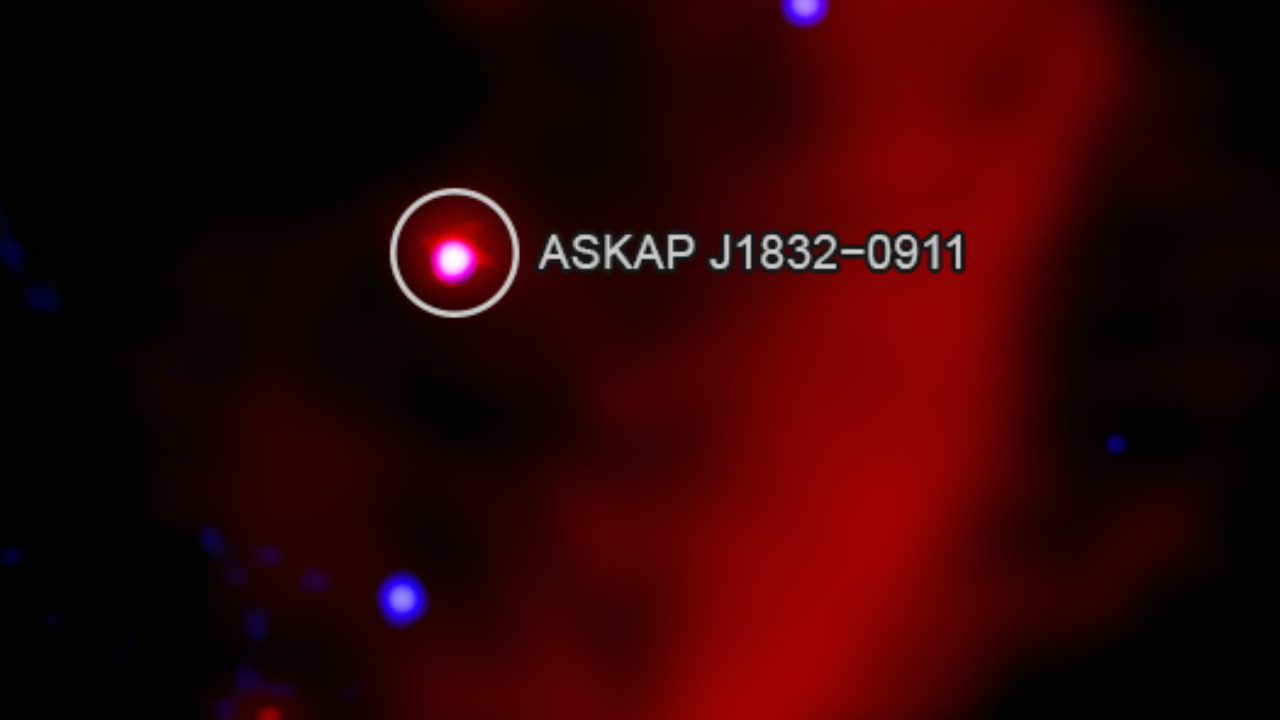In a remarkable astronomical discovery, scientists have identified a unique star exhibiting behaviours unlike any previously observed, reports Cape {town} Etc.
Named ASKAP J1832−0911, or simply ASKAP J1832, this enigmatic entity is situated approximately 15,000 light-years from Earth and has ignited enthusiasm within the scientific community for its potential to shed light on a newly identified class of celestial objects.
The revelation comes from a team of astronomers who meticulously combined data from NASA’s Chandra X-ray Observatory and the Square Kilometer Array Pathfinder (ASKAP) radio telescope located on Wajarri Country in Australia.
Their findings, detailed in the journal Nature, describe ASKAP J1832 as belonging to a group of astronomical phenomena known as ‘long period radio transients.’
These intriguing objects exhibit variations in radio wave intensity that occur periodically over tens of minutes—significantly longer than the rapid oscillations visible in standard pulsars, which are spinning neutron stars that emit signals multiple times per second.

ASKAP J1832 distinguishes itself by cycling through fluctuations in radio waves every 44 minutes. This periodicity marks it as a long period radio transient, accompanied by an unexpected discovery that the object is also varying in X-rays over the same interval.
According to Dr Ziteng Wang, the first author from the Curtin University node of the International Centre for Radio Astronomy Research (ICRAR) in Australia, ‘Astronomers have looked at countless stars with all kinds of telescopes and we’ve never seen one that acts this way. It’s thrilling to see a new type of behaviour for stars.’
However, the mystery deepens as the research team observed a dramatic drop in both X-ray and radio emissions from ASKAP J1832 over a six-month span.
This peculiar combination of short-term periodic signals and long-term changes is unprecedented within the Milky Way galaxy, prompting urgent inquiries into the object’s nature and the reasons behind its baffling behaviour.
Dr Nanda Rea, a co-author from the Institute of Space Sciences in Barcelona, Spain, remarked, ‘We looked at several different possibilities involving neutron stars and white dwarfs, either in isolation or with companion stars. So far nothing exactly matches up, but some ideas work better than others.’
While the properties of ASKAP J1832 appear inconsistent with those of a pulsar or a neutron star interacting with a companion star, some hypotheses suggest it could be an old magnetar, a type of neutron star known for its potent magnetic fields. Yet, even this theory struggles to account for ASKAP J1832’s brilliant and variable radio emissions.
Compounding the intrigue is ASKAP J1832’s location, nestled within a supernova remnant, the aftermath of a colossal stellar explosion, often hosting neutron stars.
However, the research team suggests that this positioning is likely coincidental, as the measurements indicate that ASKAP J1832 may not harbour a neutron star at its core. While an isolated white dwarf fails to fit the observed characteristics, a white dwarf accompanied by another star could potentially explain the data, but would require an extraordinarily strong magnetic field, unprecedented among known white dwarfs in our galaxy.
‘We will continue to hunt for clues about what is happening with this object, and we’ll look for similar objects,’ stated Dr Tong Bao of the Italian National Institute for Astrophysics.
‘Finding a mystery like this isn’t frustrating, it’s what makes science exciting!’
Also read:
NASA needs (inter)stellar ideas for waste management in space
Picture: NASA
